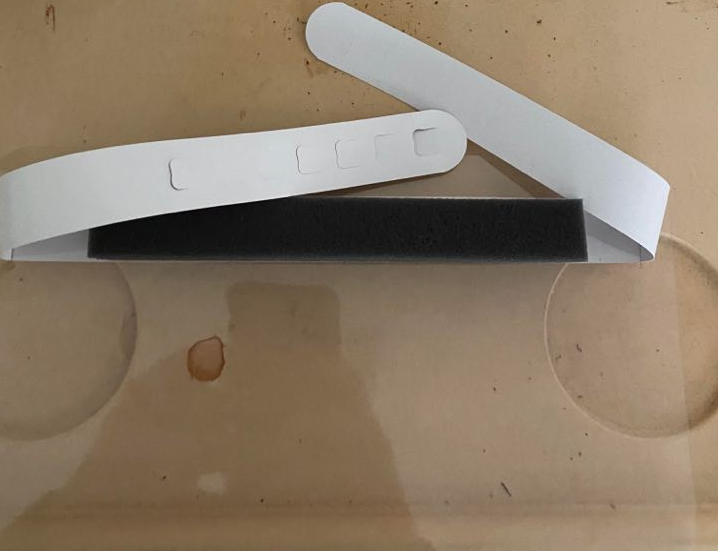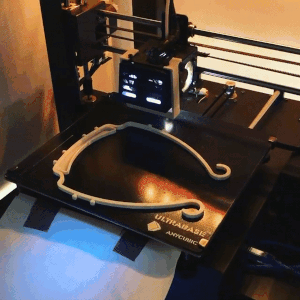3D Printing Face Shields
Encouraged, inspired and motived by Lee Haines, I’ve been convinced that people would be interested in what I’m up to during this time. Where to begin? I’m a final year PhD student at the Liverpool School of Tropical Medicine, so I’m meant to be having a stressful year anyway, whilst I write my thesis. However, I think we’re all having a stressful year, at least so far anyway.
3D Printing Preamble
For no one is that more true than our front line medical staff who are continuing in their mission to provide treatment and care for the sick, whilst facing unprecedented stress and strain on personnel and resources. We have seen many stories about PPE shortages and the detrimental and devastating impact of such shortages.
The 3D printing and maker community is a fabulous one that - much to the chagrin of IP and copyright holders - stand in fierce defiance on essential items that are not open source. Our first view of this was a team of Italian doctors and engineers who replicated a ventilator valve in CAD and started producing their own. Indeed, the maker community has rallied to make themselves available to fill the gaps in the equipment and consumables space of health staff around the world, where the traditional funders, manufacturers and suppliers are falling short. Even where health workers are receiving PPE, it’s wholly inadequate for the task they have before them. An old school friend of mine is a carer and has been given only 1 mask and 1 face shield to last an unknown amount of time. The face shield they have been given is a thick card stock and is reminiscent of the “old cardboard crowns from Burger King”.

In my time with the Liverpool School of Tropical Medicine, I’ve brought my skills with CAD and 3D printing to address problems with experimental apparatus, whether that be unique holders for anti-venom research, insecticide resistance bioassay kits or general plastic tools around the lab that either aren’t available anymore or and extortionately expensive due to the many monopolies that hold science and grants for ransom. Right now, however, I’m printing face shields.
In the 3D printing world there are 2 main designs for 3D printable face shields. The RC3 by PrusaResearch and the #3DVFaceShield by 3DVerkstan. Both have their pros and cons, and both are being produced in tandem to fill the holes of PPE availability. I’m working on the 3DVerkstan design, which is a simple design that takes anywhere between 30-50 minutes to print. It takes a plastic shield with holes from a standard hole punch.
A makerspace in Liverpool called DoES (Do Epic Stuff) is coordinating requests for PPE and doing some amazing work not only with 3D printing, but also laser CNC manufacturing; for an overview of their work, check them out here. DoES Liverpool are also producing the plastic visor portion of the face shields.
The main challenge with printing the faceshields is the time. They take about 1-hour each for something of reasonable quality. This on the surface isn’t a major problem… “you can make 24 per day!”. Unfortunately, standard printers require you to manually remove the parts after each print and start a new one. Meaning the overnight period is a void of productivity. Luckily, the 3D printing community have engineered some beautiful work arounds for this.
Auto Ejecting the Part
Some users have modified the print head of their printer and customised the print instruction to essentially ram a bar into the finished print, ejecting it off the bed and starting the print autonomously! So clever!

Clip courtesy of Just-3d-print-it on Instagram
The Belt Printer
Belt printers have been around for a while, and I’ve always wanted one, however their increased cost compared to traditional non-belt printers is currently prohibitive. They work on the premise of an infinite Z-axis. Allowing indefinite printing in one dimension. What this means for this story is that you can print a part - eg a face shield - and the printer just advances the belt so the parts is ejected from the belt. Rinse and repeat.
 2401.gif)
Clip courtesy of 3D Printing Nerd
The Stack
I was floored when I saw this method. It’s so painfully simple and effective. If you stack multiple models on top of each other and leave a small air gap between them, you can print more models per build plate and separate them with a decorator’s knife after the print. This is the method I’m using. I’m printing 10 at a time per printer and I can get two prints per day, with 3 printers that means 60 prints.
 2401.gif)
Clip courtesy of Make Anything
These methods help knock out the time component. Another concern is how clean we can produce these parts. When I’m working with the parts that are going out glove and face shields are worn. Here’s Beth Poulton who was lending a hand packaging up face shields that were going out to Health Workers. The advice to Health Workers would be that they sanitise the face shields before use, just incase there’s any asymptomatic infeciton.

The response and requests for face shields from care workers through my social media platforms since starting this has been overwhelming. I’m hearing horrendous stories of what staff are expected to do with wrong, inadequate, old, broken and non-existent PPE. My goal at the moment in addition to writing my thesis and finishing my PhD on time, is to alleviate the concerns of our brave health workers by providing them with functioning PPE.
If your organisation needs help with PPE, please see the DoES site